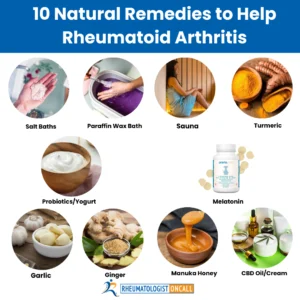SHARE
Are You Ready to Live Gout-Free?
Are you weary of the relentless gout pain that hits you like a surprise storm? Craving relief and effective solutions? Hold tight because we’re here to help! In this blog post, I’ll explain everything you need to know about tackling gout treatment. From trusted medications like Allopurinol, Febuxostat, and Colchicine to innovative treatments like Pegloticase and Methotrexate. I’ll also underline the significance of lifestyle modifications and guide you on when to initiate treatment based on the latest gout guidelines. Ready to dive in? Let’s go!
What is Gout and Why to Treat Early?
To fully grasp your treatment options, it’s crucial to understand what gout is and how it impacts your body. Gout is a kind of arthritis affecting 9.2 million people in the US alone. It brings sudden, severe bouts of pain, swelling, redness, and tenderness, typically targeting the base of the big toe. However, it can also hit other joints like your knees, ankles, hands, wrists, and even elbows. Intrigued about gout’s tell-tale signs? You can check out this video on my channel, where I delve into the top five signs of gout.
Many folks remain uncertain about gout treatment. When I see patients in the office, they have many questions like:
- When to start treatment?
- What’s the most effective treatment?
- How long should the treatment last?
- What are the long-term implications if gout is left untreated?
I will answer all of these questions. First, understand WHY you need to treat gout. To answer short: If you let gout run wild for many years, it can lead to joint damage, skin deposits like tophi, kidney stones, or even kidney disease. Sounds scary, right?
Gout Treatment: Short-Term or Long-Term?
Do you treat just the gout flare-up, or should you opt for long-term therapy to lower uric acid levels? Let’s find out!
If you experience only 1-2 gout flares per year, your doctor might decide to treat that flare and simply monitor your condition. This is the perfect time to rethink your diet and make crucial changes. If you’re wondering about the best and worst foods for gout, check out this video on my channel and discover how your diet can help prevent a gout attack.
But, if you have more than two flares per year, it’s time to start long-term therapy, also known as URATE LOWERING THERAPY. This type of treatment aims to reduce the uric acid production in your body. Intrigued to know more? Stick with me.
There are also a few other indications for starting urate-lowering therapy, and these are
- If you have one or more subcutaneous tophi
- If you have Xrays changes due to gout
- If you have the first flare and if you have chronic kidney disease > stage 3
- If you have kidney stones
- If you have a level of uric acid >9 mg/dl
If your uric acid level is high,>6.8 mg/dl, but you have never experienced gout flares or had subcutaneous tophi, there is no need to be on long-term therapy.
Battling Gout Flare-Ups
A gout attack can cripple your life with severe pain. Let’s explore some tried and trusted ways to fight back.
Colchicine
Colchicine is a lifesaver that reduces inflammation and eases pain. But here’s the catch – you should start Colchicine within the first 24 hours of a gout attack to ensure effectiveness. If you don’t have it handy, you might miss this crucial window.
NSAIDs
If Colchicine doesn’t cut it, NSAIDs like indomethacin, ibuprofen, naproxen, or Celebrex could be your next best option. However, if you have kidney disease, avoid NSAIDs and opt for prednisone instead.
Prednisone
Prednisone, a steroid medication, is a powerful anti-inflammatory agent that can reduce swelling and pain within hours or a few days. Sometimes, a quick steroid injection could work wonders too! That is why, in my office Rheumatologist OnCall, at times, I give steroid injections to my patients to cut the attack pain in half.
Gout: Long-term Medications
Now, let’s discuss the go-to medications for long-term gout management – Allopurinol and Febuxostat. Both of these medications decrease the production of uric acid in your body by inhibiting a specific enzyme called xanthine-oxidase.
Allopurinol
Allopurinol is usually the first-line medication preferred even in patients with Chronic kidney disease. Many patients tolerate this medication well, although some can develop side effects. If you are of Asian background, you should pay attention as there is a higher risk of developing side effects.
Febuxostat
Febuxostat, can be used to replace Allopurinol, but it should be avoided if you have a history of heart attacks. There were some reports of increased risk of Cardiovascular events with this medication, so disclose to your doctor if you have any heart problems.

The goal of this therapy is to maintain uric acid levels at less than 6 mg/dl. Excited to learn more? Let’s move on!
Cutting-edge Gout Treatments
What happens when conventional medications fail?
That’s where the newest treatment, Pegloticase, steps in. It’s an IV therapy given every two weeks and works wonders for patients with frequent flare-ups and tophi. But remember, it could also cause allergic reactions, and some patients may develop antibodies that decrease the drug’s effectiveness.
A recent study published in 2022 suggests pairing it with a low dose of Methotrexate could improve the success rate. Intrigued? You can find more details in this study.
Lifestyle Changes: Your Secret Weapon Against Gout
At Rheumatologist OnCall, we believe that medication is just part of the solution. Lifestyle changes are vital in preventing gout attacks. Maintain a healthy weight, exercise regularly, and avoid foods high in purines like red meat and seafood. Drinking lots of water and filling up on fruits and vegetables can help manage uric acid levels and reduce gout attacks.
Conclusion: Winning the Gout Battle
In this blog, I’ve covered the popular and latest medications for gout, the significance of lifestyle changes, and current guidelines on when to start treatment. Remember, the key to managing gout is a mix of effective medication, lifestyle tweaks, and regular consultation with your physician. That’s where Rheumatologist OnCall comes in – breaking geographical barriers and providing care when you need it the most.














